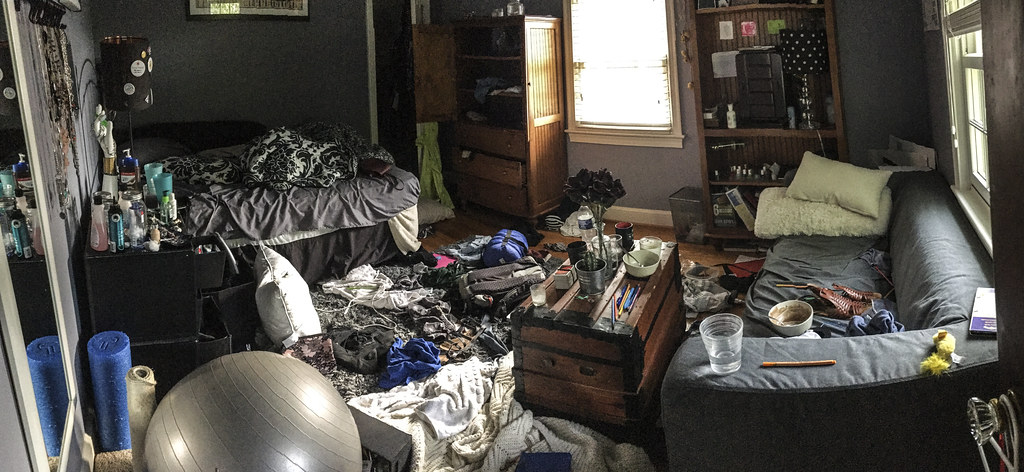- TITLE THIS BLOG POST: IB Comparative Study Worksheet 2020-21
- IF YOU WANT, PLACE A CREATIVE COMMONS IMAGE RELATED TO THE FILM FROM SEARCH.CREATIVECOMMONS.ORG AT THE TOP OF THE POST
- DELETE ALL OF MR. LE DUC’s ALL UPPERCASE INSTRUCTIONS DETAILED ABOVE

“Film scripts for sale in Soho! #newyork #newyorkcity #nyc #movies” by Nat Ireland is licensed under CC BY-NC 2.0
Summary
A guide to planning, researching, and creating your Film Comparative Study
- Follow the directions for each step below
- Include for your work where it is required
Student Work
- Justin’s Post, Script, and Draft Video Essay
- Neil’s Post, Script, and Draft Video Essay
- Satchel’s Post, Script, and Draft Video Essay
- Dexter’s Post, Script, and Draft Video Essay
- Sam’s Post, Script, and Draft Video Essay
- Jadee’s Post, Script, and Draft Video Essay
- Laari’s Post, Script, and Draft Video Essay
Guidance for Your Work
“Simple formative analysis of film elements, no matter how precise or insightful, won’t cut it which is why the research question needs to be crafted in such a way that it provides scope for theoretical and socio-historic exploration. It’s basically an EE in disguise but focusing on two very different textual sources.”
- Thoroughly read the Comparative Study requirements in IB Film Guide PDF (including rubrics)
- Watch Mr. Le Duc’s CS Overview Video
- Watch Garrett’s CS Example and Read Garrett’s Two Column Script
- Notice the color designating justified film language elements
- 3 More Examples and Scoring Guides
- Explore the CHS Library: capital.osd.wednet.edu/academics/library
- Explore The Moving Image Source Research Guide: www.movingimagesource.us
- The Moving Image Source Research Guide is a gateway to the best online resources related to film, television, and digital media
- Explore Mr. Le Duc’s Film Resources Page for Video Essays
- Examine the CS Poster 1 (PDF)
- Examine the CS Poster 2 (PDF)
Steps and Tasks
- Brainstorm possible films for the task. You must select TWO films from contrasting cultural contexts.
- Brainstorm and justify at least three different areas of FILM FOCUS for your two chosen films.
- Brainstorm and justify at least two different CULTURAL CONTEXTS for your two chosen films.
- Consolidate your ideas and develop at least three different RESEARCH QUESTION topics for your study.
- Finalize your choices and select your RESEARCH QUESTION. Choose two films for comparison.
- Develop the main arguments you will make about your topic.
- Collect evidence from the films that support your argument.
- Research secondary sources for information that supports your argument.
- Write your Narration and plan the audio-visual components of your video essay.
- Record, assemble, and edit your Comparative Study Video Essay.
- Create a Works Cited document (separately) once your Comparative Study is finished.
Comparative Study Task Components
For this assessment task, each student identifies, selects, and researches each of the following task components.
- TASK 1: One area of film focus.
- TASK 2: Two films for comparison from within the chosen area of film focus, one of which originates from a contrasting time (historical) or space (geographical) to the personal context of the student, and the other film identified for comparison must arise from a contrasting cultural context to the first film. Students are required to select films they have not previously studied in depth. The selected films cannot come from the prescribed list of film texts provided for the textual analysis assessment task and, once selected, the films cannot be used by the student in any other assessment task for the DP film course or the extended essay.
- TASK 3: A clearly defined topic for a recorded multimedia comparative study, which links both the selected films and the identified area of film focus. Each student should invest time in researching, developing, and honing their topic (which in most cases is likely to be expressed in the form of a research question) to ensure it is clear, focused and concise, in order to provide them with the maximum potential for success in this task. The topic should seek to enrich the student’s understanding of the chosen area of film focus and should avoid a plot-driven approach to the comparison.
The assessment criteria for this task requires students to provide a strong justification for the choice of task components as part of the recorded multimedia comparative study. This includes the student’s justification for how films arise from contrasting cultural contexts.
1. FILM Choices List
- Set a timer
- How much time did you spend: 1.5 hours
| Which films are you considering for your final Comparative Study? List as many as you wish below as part of an initial brainstorm. Remember that you must select TWO films from contrasting cultural contexts for this task.e.g. CITIZEN KANE | Year, Country, and Director of the film.e.g. 1941, USA, Dir: Orson Welles |
| Train to Busan | 2016, South Korea, Dir: Yeon Sang-Ho |
| Carriers | 2009, USA, Dir: Àlex Pastor and David Pastor |
| The Crazies | 2010, USA, Dir: Breck Eisner |
2. Areas of FILM FOCUS
- Set a timer
- How much time did you spend: 50 minutes
- Research Film Movements
- Research Film Genres
- Research Film Style (the difference between genre and film style defined)
- Research Film Theory
- See the Examples of Possible Task Components section further down this document
| Film Focus Possibility – identify the broad focus area and then add specifics (e.g. “THEORY – Auteur theory” or “GENRE – Horror”). Develop at least THREE options…you can create more by adding more rows. | Justification for this Film Focus. Be as specific as possible. |
| Genre- Action-Thriller | Both films portray a protagonist fighting their way to safety from a virus that has taken over the world. Including fighting and escaping which evokes a heightened feeling in the viewer. |
| Genre- Horror-Thriller | Both films induce a reaction of fear from the viewers from high climatic scenes. The protagonists have to fight off a virus infecting humans while finding trust in strangers. |
| Style- Arthouse Action | Both films have cultural differences between European-American and Asian techniques. The Korean film is a high-sped not overcomplicated film with a basic structure while the American one is high/low-sped with a series of events. |
3. Chosen CULTURAL CONTEXT
- Set a timer
- How much time did you spend: 30 minutes
For this assessment task, “cultural context” involves consideration of some of the following factors, some of which may be blended (such as socioeconomic factors).
- Economic, Geographical, Historical, Institutional, Political, Social, Technological
| Identify at least TWO Cultural Context possibilities for your chosen films. | Justification for this Cultural Context. Be as specific as possible. |
| Geographical | Train to Busan released in 2016 is a South Korean film about a zombie-virus outbreak. The protagonist was on a train to Busan when a girl started to transform from the virus, the main character must find a way to reach their intended destination while avoiding the zombies. The film contains South Korean techniques that differ from other countries. Carries in 2009 is an American film about a group of people searching for a safe place that is virus-free while trying to avoid being infected. The group will face many challenges that will cause them to make rash decisions. It is filmed with high-climatic scenes through American techniques that are popular. |
| Social | Train to Busan released in 2016 has a social aspect being one of the first zombie movies produced in South Korea. It is shown throughout the film which the director made decisions on certain ideas that related to Korea’s history. The movie also shows the protagonist and antagonist as ordinary people so that the viewers can relate to them. Carries in 2009 shows the social aspect throughout the film between the protagonists. As they go through situations and events new challenges appear that they must solve. In doing so they must follow the rules that were established. When a rule is broken this develops a problem that the group must face. |
4. RESEARCH QUESTION Possibilities
- Set a timer
- How much time did you spend: 20 minutes
Consolidate your thoughts above and develop at least THREE different research question possibilities. More are possible by adding additional rows to the table below. FYI these will be shared with the full class for discussion of strengths and weaknesses.
| Your Chosen Area of Film Focus | Topic for Comparative Study (written as a research question) |
| Genre- Action-Thriller | How does a pandemic world affect the social aspects of the characters in an action-thriller film? |
| Genre- Horror-Thriller | How does the cinematic movement of a horror-thriller film evoke a fear-induced reaction? |
| Style- Arthouse Action | How do diverse cultural aspects in a thriller genre of film sway the audience? |
5. Final Decisions
- Set a timer
- How much time did you spend: 10
Using your topic options in the table above, select ONE to be your final topic for this Comparative Study task. NOTE: There are examples from the IB of what this should look like below this table.
| Your Chosen Area of Film Focus | Film 1 | Film 2 | Contrasting Cultural Context | Topic for Comparative Study practice task (written as a research question) |
| Action-Thriller (genre) | Train to Busan (2016) | Carriers (2009) | socio-geographical | How does a pandemic world affect the social aspect of the characters in an action-thriller film? |
6. Developing Your Topic
- Set a timer
- How much time did you spend: 1.5
| Develop 3-5 main arguments that can be made about your topic based on your research question and chosen film focus. | Brainstorm how you could support these arguments within your video essay. |
| The adrenaline of being in a dangerous situation against a threat makes people group together or become enemies. | Train to Busan: At the beginning of the film when the citizens realize that the spreading of the virus has started, their first instinct is to protect themselves and not consider anyone else’s safety. Salarymen group together to show the unity of corporate men. The people on the train realize that they must work together to fight against a common enemy. The father realizes his working addiction and the lack of time spent with his daughter, so his new mission is to make sure she survives. Carriers: The group of 4 makes their way to Turtle beach and refused to help a man and his daughter when they see that she is infected. Later their car breaks down and they end up tagging along with that man and his daughter. One of the members, Piper, becomes infected by the little girl and hides it from her friends. The members have secrets kept from each other and it becomes revealed as the film progresses. When the other 3 find out that Piper is infected they make an emotional hard-ship decision. |
| The type of social class/relationship a person is in affects the way they are perceived. | Train to Busan: On the train ride we can see the various levels of social classes in one place. It unites the different classes of wealth. There is a CEO, a high school sports team, elderly sisters, a man, and his pregnant wife, and a homeless person. When the salarymen tied off the door with their ties that highlighted the unity of a group that has something in common. The film is very anti-corporate since the workaholic citizens realize that they missed out on life. Carriers: It shows two brothers and their girlfriends trying to navigate a safe path to their destination. The other relationship that is shown through the film is the father and daughter. This connects with Train to Busan with the other father and daughter. In one scene a doctor is ‘aiding’ infected children while being infected himself (he is actually trying to end their misery). |
| The way the zombies/infected are portrayed in the movie induces emotions that vary. | Train to Busan: The chaos of a zombie mob is intense on the train scene since the people are stuck in a small closed area. Within a small area, this can help the audience connect more with the character’s personalities. If a valued character in the movie dies from a zombie this can make the viewers feel a degree of heartbreak considering the way they died. The zombies in the film are very fast and smart, something that is different than the usual zombie films. Carriers: When the infected little girl was choking Piper had to make a decision of whether to help her or not. That showed an intense decision-making scene. The film’s timeline is unique where it starts in the middle to end of a dire situation. Where this group of teens have been surviving the virus and are deciding to find a safe place. Being infected is not only killing the person but also making the people around turn against them. Like how the doctor was trying to poison those infected kids or when a person in the group became infected. |
7. Selecting Supporting Evidence (Primary)
- Set a timer
- How much time did you spend: 1hr and 40 mins
| Identify at least 15 scenes from your chosen films that will help support the arguments you have outlined above. Screen clip a frame from each scene below. | Write notes about how this scene helps support your argument. (These notes will help form your voice-over narration.) |
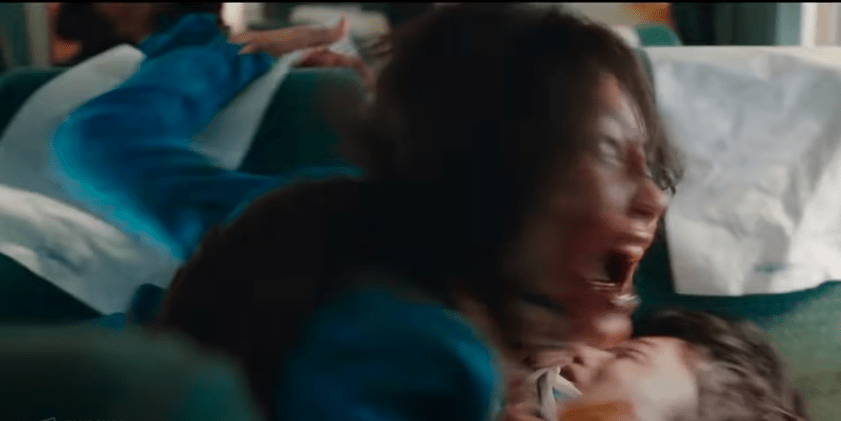 | -At the beginning in the train, where the zombie spreading is starting -This scene shows how quick and attentive the zombies are and the way the scene is full of chaos. It also highlights the fastness of the transformation of a bitten person. |
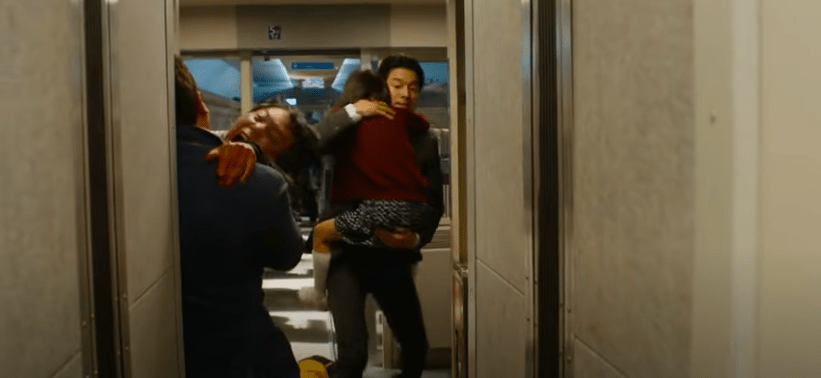 | -Train scene at the beginning -Shows how the father was fending for himself and his daughter while that man is being attacked by a zombie. |
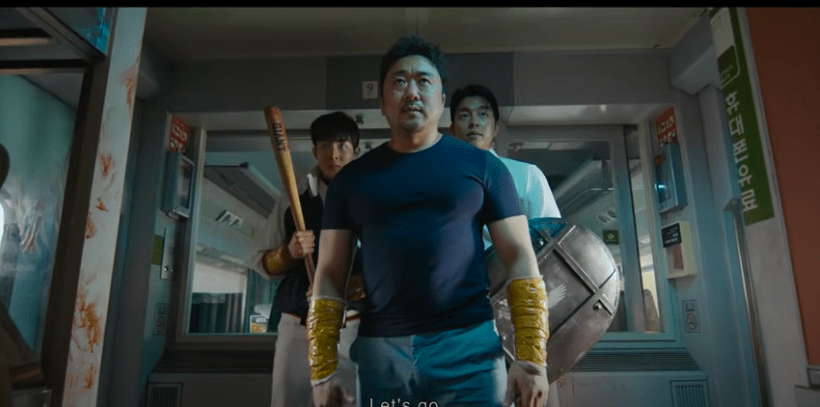 | -When the men have to fight a crowd of zombies to get to the other side -Shows that they learned to work together to defeat an enemy instead of being selfish. |
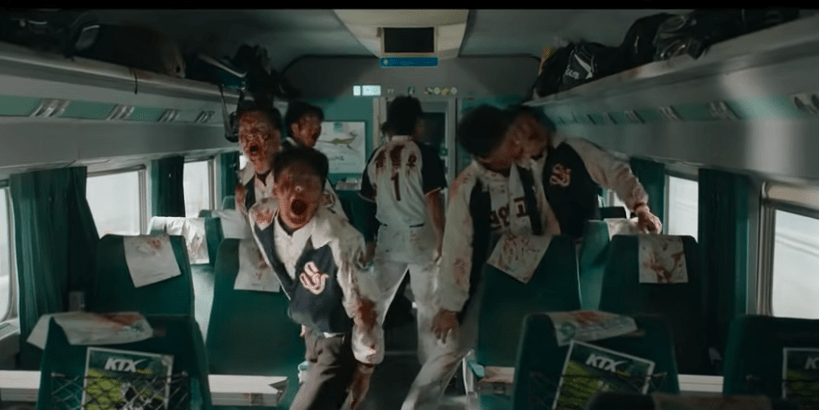 | -When the men have to fight another crowd of zombies but this time it’s a group of teammates of one of the boys. -During this scene the boy doesn’t know if he can fight these zombies because they were once his friends. This shows a stressed emotion and a hard decision. |
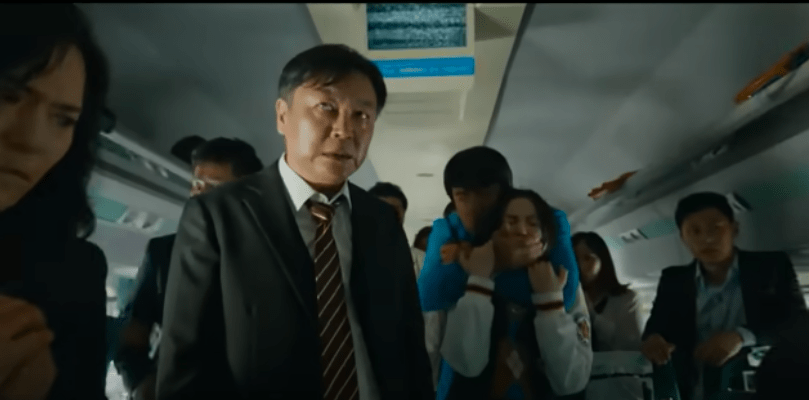 | -A group of corporate men has a decision to either let in the people from the other side or not. -This might show the differences in social classes that might have affected their decision. |
 | -The group fought their way into the safe part of the train and is being forced out by the other group. -This group consisted of different levels of classes of people, which might have impacted one of the reasons why they were not let in the area. |
 | -This scene is outside near the railing of a moving train. -The father risks his life to make sure that his daughter is safe and in the end gets bitten. |
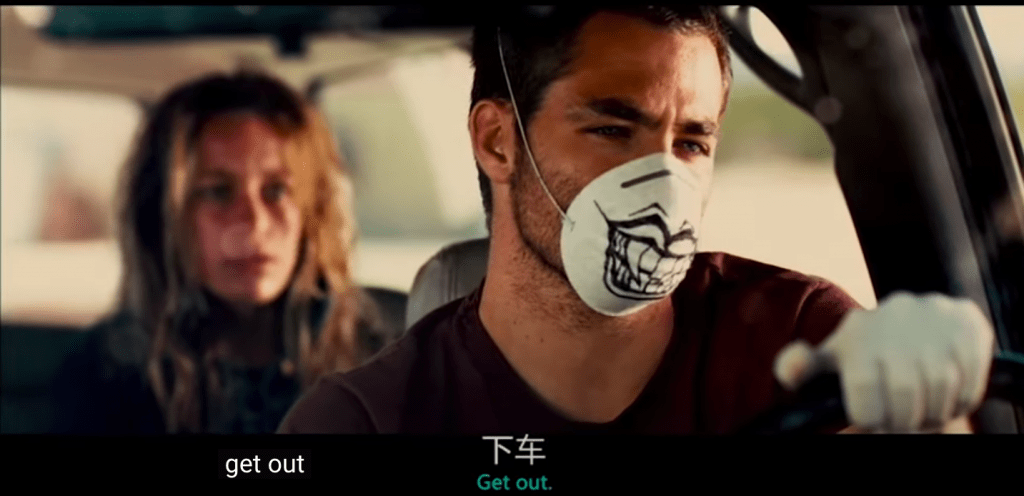 | -The group stops at a gas station -Brian makes Piper get out of the car because she was infected. This shows how even the people closest to you will abandon you because of a dangerous situation. |
 | -The scene where the group find the doctor -The doctor is trying to poison the infected kids. The kids trust him because he has a medical degree but he lies to them and overused his power. |
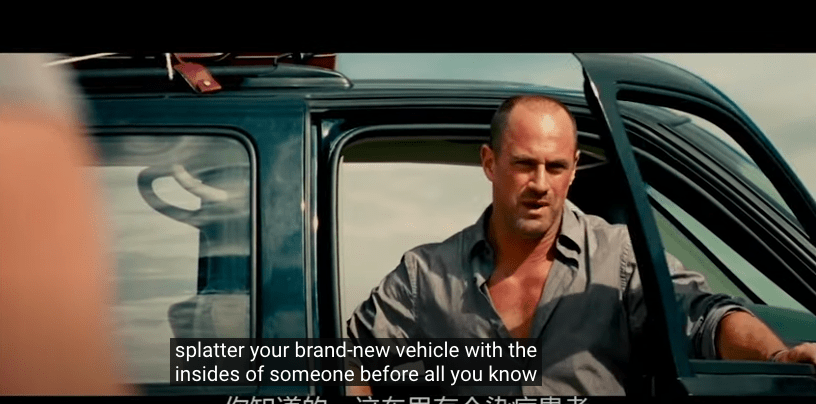 | -The group runs out of gas so they went to steal a car -They found a solution and put the infected girl and her dad in the back. This was when they grouped together. |
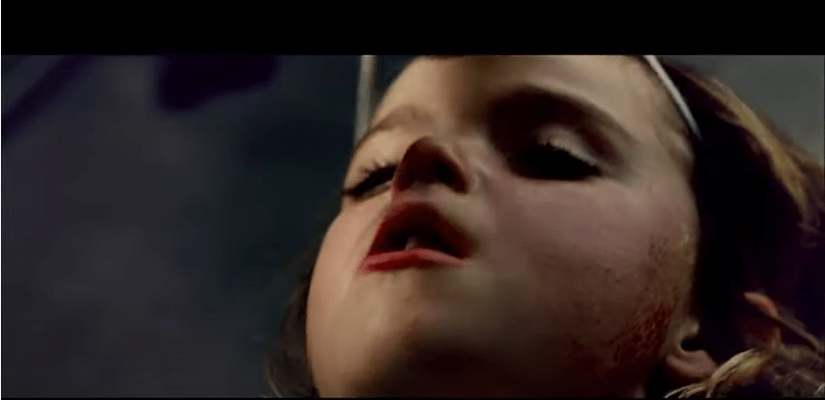 | -The scene where Piper and the little girl are left alone in the car and she starts choking. -Piper makes the decision to help the infected girl but risks the chance of being infected. |
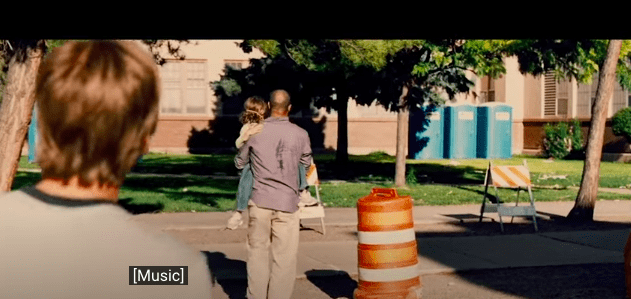 | -The scene where the little girl has to go to the bathroom -Brian wants to abandon them out there but his brother wants the opposite. This shows the betrayal between people. |
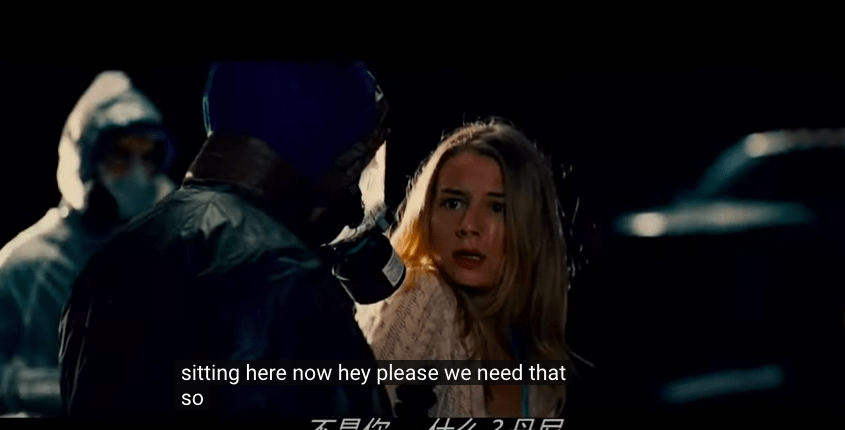 | -The group was caught by a new group of people -The new group wants to get rid of the brothers but keep the girls. This could be an example of gender inequality/ sexism. |
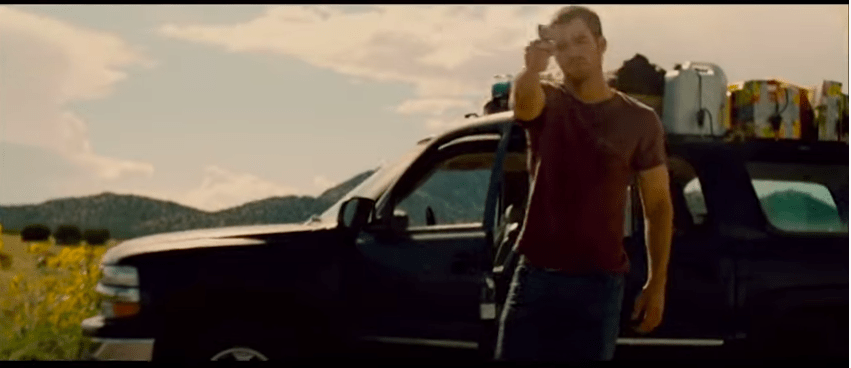 | -The group needs more gas -Brian decides to kill two people to get gas. This is an example of a high-impacted scene where the characters have to make tough decisions. |
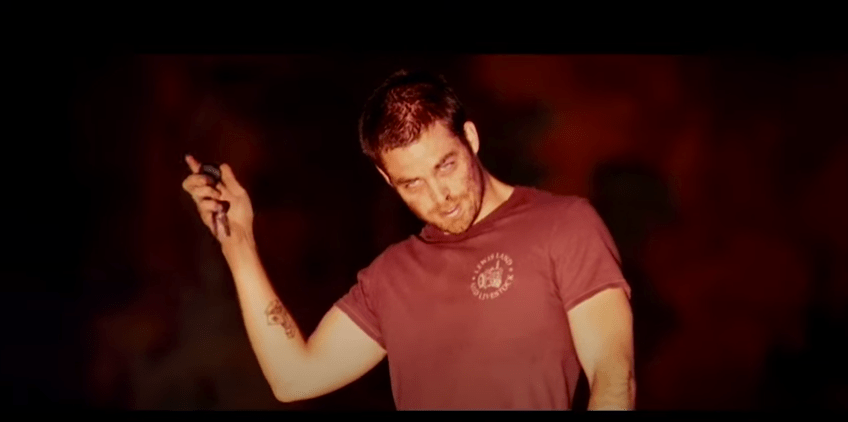 | -Brian becomes infected and the other two have to leave him -They decide to kill him because they felt like there was no other way. Shows how the relationship between the brothers was affected by the virus. |
*Add more rows as needed.
8. Selecting Supporting Evidence (Secondary)
- Set a timer
- How much time did you spend: 20 min
| Identify at least 3-5 secondary sources (articles, books, websites, video essays, etc.) which provide information that help support your arguments being made. In this column include the specific source citations. | Summarize the detailed information from the secondary source that you can use in this column. (You can copy+paste if they are from online sources.) |
| Train to Busan: How Zombie Films Explain Society | “Aside from this bit of cinematic karma, I couldn’t help but notice some other themes in the film, particularly an anti-corporate and anti-salaryman sentiment” “Train to Busan centers its story on a father taking the bullet train with his daughter so she can visit her mother, his ex-wife, for her birthday. We learn quickly that this dad spends more time in the office than at home which led to his divorce and leaves his elderly mother to take care of his daughter while he works.” “Again we are reinforced with the idea that caring for others is a weakness and you should only care about your own wellbeing. “ “…these are some of the fastest and most visceral zombies I have ever seen…” “the group of salarymen has barricaded the door against them (cleverly highlighting this perverse sense of unity of the corporate men by using their neckties).” “This event has a clear effect on the father who has now learned the importance of coming together against a true enemy.” “After all those years of devotion and time spent in the office instead of at home with his family, his job is literally trying to kill him and his daughter. Everything falls into perspective. The only thing important now is that his daughter must survive.” |
| Carriers (2009) | “…as they come across the vehicle with Chris Meloni and his daughter Kiernan Shipka and argument ensues about whether to stop and offer gas or, as Chris Pine urges, to keep on going, before they see the daughter (Kiernan Shipka) hiding in the back with a bloodstained facemask and he accelerates away. The kicker comes when their car breaks down not far down the road and the only course of continuing on is having to go back to conduct a deal with Chris Meloni.” “…only to discover a tented area inside where doctor Mark Moses is tending a bunch of children before revealing he is infected too, there is no antidote and he is preparing to feed the kids poisoned Kool Aid to put them out of their misery. “ “…Piper Perabo is left tending young Kiernan Shipka when Kiernan to start choking and Piper has to make the decision to break the seal and go to her aid – only for Kiernan to then cough blood all over her and Piper having to hide the bloodstained shirt…” “…Kiernan Shipka wants to go to the toilet and Chris Meloni cautiously decides to accompany her to the Port-a-Potties across the other side of the carpark in the full knowledge that Chris Pine is urging the others to drive off and leave them there.” “The scene where they eventually discover that Piper Perabo is infected and the drama that ensues as they decide what to do is emotionally gruelling.” |
| Train to Busan is a Zombie Action Fim with a Social Bite | “The good, the bad, and the ugly of Korean society are all aboard the high-speed train: a bastard CEO, a high-school baseball team, a pair of elderly sisters, a resourceful working class husband and his pregnant wife, and a homeless man derogatively referred to as “an odd person” by a fellow passenger.” “Train To Busan is a film about doors and separation, a closed society that is terrified of breaking conventions, the body politic scared of their own reflection. When the passengers flee between the carriages we see just how dysfunctional South Korean society really is.” “Train To Busan of course tackles the rigorous class divide but also the cost of having an education system based upon students being test-ready rather than being equipped to adapt to different challenges. “ “When we see zombies rain from the sky from of the landing skis of helicopters or when dozens of undead soldiers fall from the station onto the tracks, these deadly lemmings remind us of the atrocious suicide rate that South Korea’s brutally competitive education system helps to foster.” “Train To Busan unites the classes divided by wealth and education as well as over six decades between past and present.” |
*Add more rows as needed.
9. Writing Your Narration
- Set a timer
- How much time did you spend on the first draft: ?
- How much time did you spend on the final draft: ?
Using the information, scene choices, and external sources you have compiled in steps 6-8, you will now write your voiceover narration and match it up to your chosen visual examples.
Length (</= 10 Minutes)
- For the final Comparative Study, your narration should be no longer than 10 minutes in length.
Remember that you need to:
- COMPARE and CONTRAST your two chosen film using the arguments and evidence you identified in parts 6-8, above
- Begin your narration with a detailed justification for the chosen cultural contrast
- Use an equal balance of the two selected films.
- Write in a third-person voice to construct your argument (similar in tone to your Extended Essay and other
comparative analytical work you have written in Film class). - Identify where any WRITTEN TEXT will appear on the screen and highlight this (to reference during the
creation/editing stage)
| Which Visual Evidence/Scenes line up to this part of the narration? | Voiceover Narration Ideas |
Formatting Guidelines
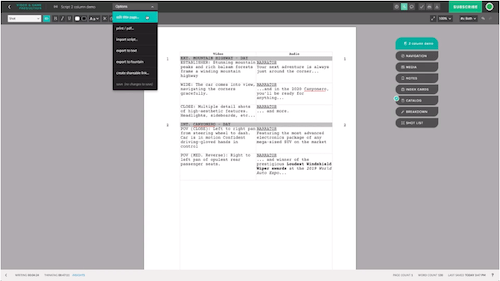
- Watch the Formatting of an Audio/Video Script in Celtx
- Assemble in Two-Column AV Format in an option below
10. Assembling the Comparative Study
- Set a timer
- How much time did you spend: ?
Now you will collect all media resources needed for the task and construct your video essay.
REQUIRED STEPS
- Import the digital copy of your chosen films into editing software
- Identify and extract chosen scenes and clips
- Place and edit clips into a rough timeline for your video essay
- Record audio narration (both partners should participate in narrating this practice task)
into an audio file using recording equipment (Zoom recorders, iPhone, DSLR Rode video
mic, etc.) - Import your recorded narration audio file into your project timeline
- Assemble, edit and fine-tune clips and narration until your video essay takes shape
- Create and add any required textual information in the timeline (including black slate at the start)
- Audio mixing of narration and movie clips (adjust levels so that narration and movie sounds complement each other)
- Export the final video essay movie file
- Upload Unlisted draft to YouTube for peer review
11. Create Works Cited
- Set a timer
- How much time did you spend: ?
- Create Works Cited document separately (Google Doc)
Examples of Possible Task Components
| Area of film focus | Film 1 | Film 2 | A possible topic for comparative study |
| Film movement: German Expressionism | The Cabinet of Dr. Caligari (1920) | Edward Scissorhands (1990) | How and with what effect are specific film elements of German expressionism used within a chosen contemporary film? |
| Film movement: French New Wave | Breathless (1960) | Badlands (1973) | The influence of the French New Wave on New Hollywood’s use of innovative film elements in its representation of youth and violence. |
| Film genre and film style: Black comedy | No. 3 (1997) | The Big Lebowski (1998) | To what extent do “black comedy” films differ according to cultural context? |
| Film theory: Soviet Montage | Battleship Potemkin (1925) | Koyaanisqatsi (1982) | To what extent are specific features of Soviet montage theory faithfully employed in a contemporary experimental film? |
External Assessment Criteria SL and HL
Peer Review Checklist
| TASK COMPONENTS (ACTION) | Notes / Suggestions | |
| __ | Assemble Findings | |
| __ | Develop a personal and critically reflective perspective | |
| __ | Identify and gather appropriate audio-visual material to support the study | |
| SCREENPLAY | ||
| __ | Justify the chosen topic and selected films | |
| __ | Make sure that the text is in a formal academic register (can be in the 1st person) | |
| __ | The balance between visual and spoken elements | |
| __ | Make clear reference to your sources as on-screen citations (text on-screen) | |
| __ | Make sure the primary weight of evidence for the study from the two chosen films | |
| __ | Make sure each film is given equal consideration | |
| __ | Make sure film language information is communicated clearly throughout (avoid “to be” verbs – make statements like “blah is this.”) | |
| __ | Make sure information is communicated logically rooted in film language | |
| __ | Have another student highlight the WHAT WHY HOW in your draft screenplay | |
| VIDEO ESSAY | ||
| __ | Recorded voice and edited commentary numerous times until happy with the material | |
| __ | Make sure your name and the school’s name ARE NOT IN THE ESSAY | |
| __ | Make sure to have 10-second title card with:1. Area of film focus2. Titles of the two films for comparison3. The chosen topic | |
| __ | Include breaks in your recorded commentary to enable other audio-visual material included in the study to be clearly heard (if needed) | |
| __ | Make sure film clip length matches points being made | |
| __ | Make sure still images have citations on-screen if you have them | |
| __ | Make sure text on-screen is legible and spelled correctly | |
| __ | Make sure information is communicated audibly (levels are good for all sound) | |
| __ | Make sure information is communicated visually appropriate manner | |
| __ | Make sure background music is from Creative Commons and is cited | |
| __ | Make sure edits are clean | |
| __ | Make sure the presentation is 10 minutes maximum, including title card and credits | |
| __ | Make sure two films are listed in sources |

